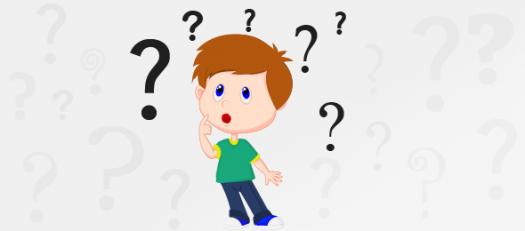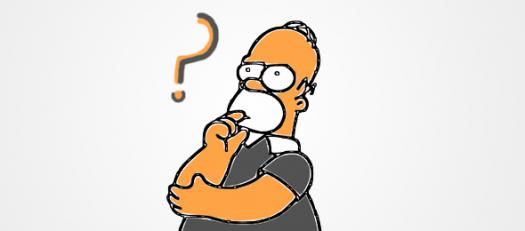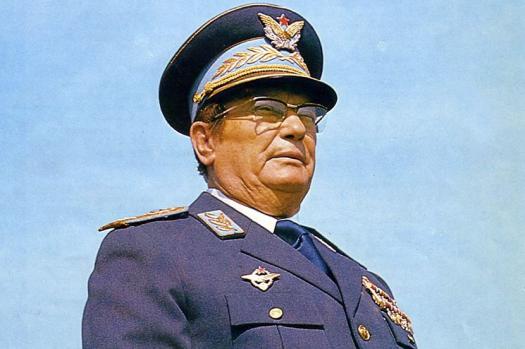1. In 2. Svetovna Vojna

- 1.
OZNAČI ODKRITJA PRED 1. SVETOVNO VOJNO!
- A.
AVTOMOBIL
- B.
ANTIBIOTIK
- C.
TELEFON
- D.
TELEGRAF
- E.
NEMI FILM
Correct Answer(s)
A. AVTOMOBIL
C. TELEFON
D. TELEGRAFExplanation
The given answer includes the inventions that were made before the First World War. The automobile, telephone, and telegraph were all invented in the late 19th and early 20th centuries. These inventions revolutionized communication and transportation, making it easier for people to connect with each other and travel long distances. The inclusion of "nemi film" (silent film) in the list is incorrect, as silent films were not invented before the First World War.Rate this question:
-
- 2.
NAVEDI TRI VZROKE ZA ZAČETEK 1. SVETOVNE VOJNE!
- A.
ATENTAT NA FRANCA FERDINANDA
- B.
GOSPODARSKA KRIZA
- C.
NEMČIJA ŽELI NOVO DELITEV KOLONIJ
- D.
NASPROTJA NA BALKANU
- E.
AVSTRO-OGRSKA ŽELI OSVOJITI EVROPO
Correct Answer(s)
B. GOSPODARSKA KRIZA
C. NEMČIJA ŽELI NOVO DELITEV KOLONIJ
D. NASPROTJA NA BALKANUExplanation
The given answer suggests that the causes for the start of World War 1 were the economic crisis, Germany's desire for a new division of colonies, and conflicts in the Balkans. These factors contributed to the tensions and rivalries among European powers, ultimately leading to the outbreak of the war. The economic crisis weakened countries and created a sense of competition for resources, while Germany's desire for colonies and conflicts in the Balkans added to the already existing political and territorial disputes between nations.Rate this question:
-
- 3.
KAJ JE BIL POVOD ZA VOJNO?
- A.
SPOR MED AVSTRO-OGRSKO IN SRBIJO
- B.
ATENTAT NA FRANCA FERDINANDA
- C.
HUDA GOSPODARSKA KRIZA
- D.
IZNAJDBA NOVEGA OROŽJA
Correct Answer
B. ATENTAT NA FRANCA FERDINANDAExplanation
The correct answer is "ATENTAT NA FRANCA FERDINANDA" (Assassination of Franz Ferdinand). This event was the immediate cause of World War I. Franz Ferdinand, the heir to the Austro-Hungarian throne, was assassinated by a Serbian nationalist in Sarajevo, Bosnia. This assassination led to a series of diplomatic and military escalations between Austria-Hungary and Serbia, eventually dragging other countries into the conflict and triggering a full-scale war.Rate this question:
-
- 4.
KJE SE JE ZGODIL ATENTAT NA FRANCA FERDINANDA?
- A.
DUNAJ
- B.
LJUBLJANA
- C.
SARAJEVO
- D.
CELJE
Correct Answer
C. SARAJEVOExplanation
The correct answer is SARAJEVO because it is the historical city where the assassination of Archduke Franz Ferdinand took place. The assassination occurred on June 28, 1914, when Gavrilo Princip, a member of the Serbian nationalist group, shot and killed the Archduke and his wife while they were visiting Sarajevo. This event is considered a significant trigger for the start of World War I.Rate this question:
-
- 5.
SLOVENSKO OZEMLJE JE SPADALO PRED 1. SVETOVNO VOJNO K:
- A.
AVSTRO-OGRSKI
- B.
JUGOSLAVIJI
Correct Answer
A. AVSTRO-OGRSKIExplanation
Before the start of World War I, the territory of Slovenia was part of the Austro-Hungarian Empire. This was a multinational empire that included various ethnic groups, including Slovenes. After the war, the empire collapsed, and the territory of Slovenia became part of the newly formed Kingdom of Yugoslavia. However, before the war, it was under the control of the Austro-Hungarian Empire.Rate this question:
-
- 6.
BOJEVANJE V 1. SVET.VOJNI JE POTEKALO V JARKIH. TAKEMU NAČINU REČEMO:
- A.
TOTALNA VOJNA
- B.
POZICIJSKA VOJNA
- C.
ATOMSKA VOJNA
Correct Answer
B. POZICIJSKA VOJNAExplanation
The correct answer is "POZICIJSKA VOJNA" because the question states that the fighting in the First World War took place in trenches, which is a characteristic of positional warfare. Total war refers to a conflict involving the complete mobilization of resources and population, while atomic war involves the use of nuclear weapons. Neither of these terms accurately describes the type of warfare described in the question.Rate this question:
-
- 7.
NEPREKINJENA IN MOČNO UTRJENA ČRTA, KJER POTEKA BOJEVANJE DVEH STRANI REČEMO:
Correct Answer
FRONTAExplanation
The correct answer is "FRONTA" because it is a term used to describe an uninterrupted and strongly fortified line where two sides are engaged in combat. This term is commonly used in military contexts to refer to the area or zone where battles are taking place.Rate this question:
- 8.
KATERO OROŽJE JE BILO UPORABLJENO V 1. SVETOVNI VOJNI?
- A.
ATOMSKA BOMBA
- B.
BRZOSTRELKA
- C.
KEMIČNO OROŽJE
- D.
Option4
Correct Answer(s)
B. BRZOSTRELKA
C. KEMIČNO OROŽJEExplanation
The correct answer is "BRZOSTRELKA, KEMIČNO OROŽJE". The question asks about the weapons used in World War I. The options given are "ATOMSKA BOMBA", "BRZOSTRELKA", "KEMIČNO OROŽJE", and "Option4". Out of these options, "BRZOSTRELKA" (machine gun) and "KEMIČNO OROŽJE" (chemical weapons) were indeed used in World War I. Therefore, the correct answer is "BRZOSTRELKA, KEMIČNO OROŽJE".Rate this question:
-
- 9.
V KATERI DRŽAVI SMO BILI SLOVENCI PRED ZAČETKOM 1. SVETOVNE VOJNE?
- A.
KRALJEVINA JUGOSLAVIJA
- B.
DRŽAVA SHS
- C.
AVSTRO-OGRSKA
- D.
SLOVENIJA
Correct Answer
C. AVSTRO-OGRSKAExplanation
Before the start of World War I, Slovenians were part of the Austro-Hungarian Empire, also known as the Austro-Hungarian Monarchy or the Dual Monarchy. This multinational empire included territories in present-day Austria, Hungary, Czech Republic, Slovakia, Slovenia, Croatia, Bosnia and Herzegovina, and parts of Italy, Poland, Romania, and Ukraine. Slovenians were therefore citizens of the Austro-Hungarian Empire prior to the outbreak of World War I.Rate this question:
-
- 10.
OB KATERI REKI NA SLOVENSKEM OZEMLJU SO POTEKALI NAJHUJŠI BOJI 1. SV. VOJNE?
- A.
SAVA
- B.
SAVINJA
- C.
MURA
- D.
SOČA
Correct Answer
D. SOČAExplanation
The correct answer is Soča. The question asks about the river in Slovenia where the worst battles of World War I took place. The Soča River, also known as the Isonzo River, was the location of fierce fighting between Italian and Austro-Hungarian forces during the war. The battles along the Soča River were known for their brutal conditions and high casualties, making it the correct answer to the question.Rate this question:
-
- 11.
KATERA STRAN JE BILA V 1. SVET.VOJNI ZMAGOVALKA?
- A.
ANTANTA
- B.
CENTRALNE SILE
Correct Answer
A. ANTANTAExplanation
The correct answer is "ANTANTA." The question is asking which side was the winner in World War I. The Antanta, also known as the Allies, was the group of countries that fought against the Central Powers during the war. They included countries such as France, Britain, and Russia. Therefore, the Antanta was the victorious side in World War I.Rate this question:
-
- 12.
KATERA DRŽAVA NASTANE PO RAZPADU AVSTRO-OGRSKE NA NAŠEM OZEMLJU?
- A.
KRALJEVINA JUGOSLAVIJA
- B.
DRŽAVA SHS-SLOVENCEV, HRVATOV IN SRBOV
- C.
SLOVENIJA
- D.
AVSTRO-OGRSKA
Correct Answer
B. DRŽAVA SHS-SLOVENCEV, HRVATOV IN SRBOVExplanation
The correct answer is DRŽAVA SHS-SLOVENCEV, HRVATOV IN SRBOV because after the dissolution of Austria-Hungary, the Kingdom of Serbs, Croats, and Slovenes (later renamed to the Kingdom of Yugoslavia) was formed on the territory. This new state aimed to unite the South Slavic peoples, including Slovenes, Croats, and Serbs, into one country. It was established in 1918 and lasted until 1941 when it was occupied by Axis powers during World War II.Rate this question:
-
- 13.
ODKRITJA MED OBEMA SVETOVNIMA VOJNAMA- OZNAČI TRI!
- A.
ANTIBIOTIK
- B.
AVTOMOBIL
- C.
ELEKTRIKA
- D.
NEMI FILMI
Correct Answer(s)
A. ANTIBIOTIK
D. NEMI FILMIExplanation
The correct answer includes "ANTIBIOTIK" and "NEMI FILMI" because both of these discoveries were made between the two world wars. "ANTIBIOTIK" refers to the discovery of antibiotics, which revolutionized medicine and saved countless lives. "NEMI FILMI" refers to the invention of silent films, which were a significant development in the film industry during that time period. "AVTOMOBIL" and "ELEKTRIKA" are not included in the correct answer because they were not specifically discoveries made between the two world wars.Rate this question:
-
- 14.
KAJ JE BIL POVOD ZA ZAČETEK 2. SVETOVNE VOJNE?
- A.
ATENTAT NA FRANCA FERDINANDA
- B.
NAPAD NEMČIJE NA POLJSKO
- C.
NAPAD JAPONSKE NA AMERIŠKO VOJAŠKO OPORIŠČE
- D.
ATOMSKA BOMBA
Correct Answer
B. NAPAD NEMČIJE NA POLJSKOExplanation
The correct answer is "NAPAD NEMČIJE NA POLJSKO" (Attack of Germany on Poland). This event is widely recognized as the trigger for the start of World War II. On September 1, 1939, Germany invaded Poland, which led to a series of declarations of war from other countries and the escalation of the conflict into a global war. The attack on Poland was a clear act of aggression and violation of international law, prompting other nations to intervene and ultimately leading to the outbreak of World War II.Rate this question:
-
- 15.
KDO SO BILI OKUPATORJI SLOVENSKEGA OZEMLJA V ČASU 2. SVETOVNE VOJNE?
- A.
ZDRUŽENE DRŽAVE AMERIKE
- B.
FRANCIJA
- C.
ITALIJA
- D.
MADŽARSKA
- E.
VELIKA BRITANIJA
- F.
NEMČIJA
Correct Answer(s)
C. ITALIJA
D. MADŽARSKA
F. NEMČIJAExplanation
During World War II, Slovenia was occupied by Italy, Hungary, and Germany. These three countries, along with other Axis powers, sought to gain control over Slovenian territory for various strategic and ideological reasons. Italy occupied parts of Slovenia, particularly the western and southern regions, as it aimed to expand its own territory and establish a buffer zone against Yugoslavia. Hungary occupied the northeastern region of Prekmurje, which it had previously claimed as part of its own territory. Germany, as the leading power in the Axis alliance, occupied the rest of Slovenia, exerting control and implementing its policies in the region.Rate this question:
-
- 16.
V 2. SVETOVNI VOJNI NASTANE OS RIM-BERLIN-TOKIO. TO IMENUJEMO TUDI______PAKT.
Correct Answer(s)
TROJNIExplanation
The correct answer is "TROJNI" because the question states that during World War II, an alliance was formed between Rome, Berlin, and Tokyo. This alliance is commonly referred to as the "TROJNI PAKT" or "TRIPLE ALLIANCE."Rate this question:
- 17.
HITLERJEV NAPAD NA JUGOSLAVIJO SE JE ZAČEL:
- A.
1. SEPTEMBRA 1939
- B.
29. JUNIJA 1914
- C.
6. APRILA 1941
- D.
Option 4
Correct Answer
C. 6. APRILA 1941 -
- 18.
KDO SO BILI VODITELJI TOTALITARNIH DRŽAV PRED 2. SVETOVNO VOJNO?
- A.
STALIN
- B.
EINSTEIN
- C.
MUSSOLINI
- D.
HITLER
- E.
LENIN
Correct Answer(s)
A. STALIN
C. MUSSOLINI
D. HITLERExplanation
The correct answer is Stalin, Mussolini, and Hitler. These three individuals were indeed leaders of totalitarian states before World War II. Stalin was the leader of the Soviet Union, Mussolini was the leader of Italy, and Hitler was the leader of Nazi Germany. They all implemented oppressive regimes and exercised complete control over their respective countries, suppressing opposition and promoting their own ideologies. Lenin, on the other hand, was a leader of the Soviet Union but died before the outbreak of World War II. Einstein, while a renowned physicist, was not a leader of a totalitarian state.Rate this question:
-
- 19.
KAKŠEN POMEN JE IMELA USTANOVITEV OF (OSVOBODILNE FRONTE)ZA SLOVENCE?
- A.
PREVZELA VODENJE OBOROŽENEGA ODPORA
- B.
SODELOVALA Z OKUPATORJI
- C.
ZAMENJALA JE POBEGLEGA KRALJA PETRA KARAĐORĐEVIĆA
Correct Answer
A. PREVZELA VODENJE OBOROŽENEGA ODPORAExplanation
The correct answer is "PREVZELA VODENJE OBOROŽENEGA ODPORA" (took over the leadership of the armed resistance). This means that the establishment of the Liberation Front for Slovenes was responsible for leading the armed resistance against the occupation forces.Rate this question:
-
- 20.
KAKO SO SE IMENOVALI BORCI, KI SO SE SPOPADALI Z OKUPATORJEM NA NAŠEM OZEMLJU?
Correct Answer
PARTIZANIExplanation
The correct answer is "PARTIZANI" because the question is asking for the name of the fighters who fought against the occupiers on our territory. "Partizani" is the Slovenian word for partisans, which refers to the resistance fighters who opposed the occupying forces during World War II.Rate this question:
- 21.
KDO JE BIL VRHOVNI POVELJNIK PARTIZANSKE VOJSKE? Napiši ime , priimek in vzdevek!
Correct Answer
JOSIP BROZ TITOExplanation
Josip Broz Tito was the Supreme Commander of the Partisan Army during World War II. He was a prominent Yugoslav revolutionary and statesman, known for his leadership in the resistance against Axis occupation. Tito played a crucial role in organizing and leading the Partisan forces, which fought against the German, Italian, and collaborationist forces in Yugoslavia. His leadership and strategic skills were instrumental in the success of the Partisan movement, making him the undisputed Supreme Commander of the Partisan Army. Tito's leadership and the Partisan Army's resistance efforts eventually led to the liberation of Yugoslavia from Axis control.Rate this question:
Quiz Review Timeline +
Our quizzes are rigorously reviewed, monitored and continuously updated by our expert board to maintain accuracy, relevance, and timeliness.
-
Current Version
-
Mar 19, 2023Quiz Edited by
ProProfs Editorial Team -
May 22, 2017Quiz Created by
Brigitahostnik
 Back to top
Back to top












